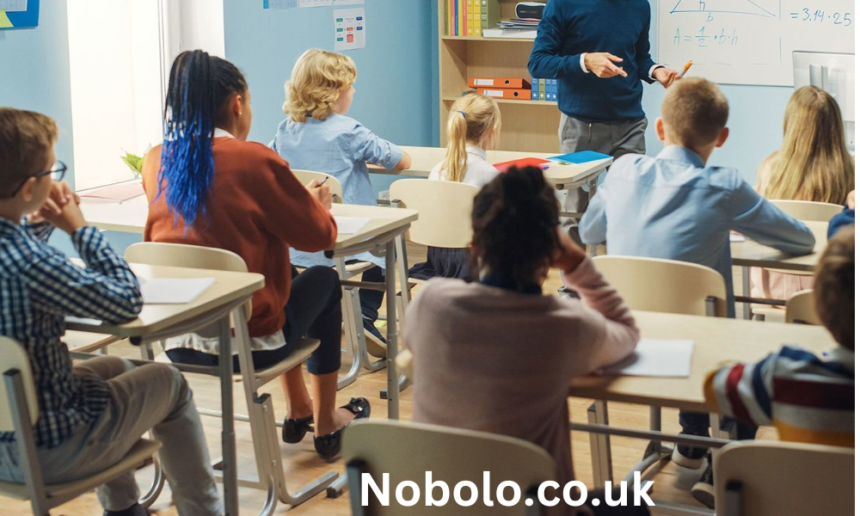The “Mexi Classroom” is a concept that marries traditional Mexican culture with modern educational practices, creating a unique and engaging learning environment. By integrating cultural richness with innovative teaching methods, the Mexi Classroom aims to foster a sense of identity, inclusivity, and global understanding. In this article, we will delve into the various aspects that define a Mexi Classroom, its benefits, practical implementation, and how it stands as a beacon of inspiration for educators worldwide.
What is a Mexi Classroom?
A Mexi Classroom is more than just a space for learning; it is an embodiment of Mexico’s vibrant traditions, art, language, and history within an educational setting. This approach creates an immersive environment where students can explore and appreciate the essence of Mexican culture while achieving academic success.
Core Elements of a Mexi Classroom
- Cultural Decor and Ambiance
- Walls adorned with traditional Mexican art such as murals, papel picado (decorative paper), and colorful tiles.
- Integration of symbols like the agave plant, mariachi instruments, and Aztec motifs.
- Curriculum Integration
- Lessons infused with Mexican history, geography, and literature.
- Activities like storytelling of Mexican folklore and studying famous figures like Frida Kahlo and Diego Rivera.
- Bilingual Education
- Focus on teaching Spanish alongside English to enhance linguistic skills and cultural understanding.
- Use of traditional Mexican proverbs to teach moral lessons.
- Celebration of Festivals
- Incorporating cultural events like Día de los Muertos (Day of the Dead) and Cinco de Mayo into the school calendar.
- Hands-on activities like crafting sugar skulls and cooking traditional dishes.
Benefits of a Mexi Classroom
1. Promotes Cultural Awareness
By introducing students to the rich tapestry of Mexican culture, the Mexi Classroom helps them develop respect and appreciation for diversity. This awareness fosters global citizenship and empathy.
2. Encourages Multilingual Proficiency
Bilingual education in a Mexi Classroom equips students with valuable communication skills, broadening their opportunities in an increasingly interconnected world.
3. Enhances Creativity and Engagement
The vibrant visuals, interactive lessons, and cultural activities stimulate students’ imaginations, making learning enjoyable and memorable.
4. Strengthens Community Bonds
Parents and community members are often invited to participate in cultural celebrations and activities, creating a strong connection between the school and its surrounding community.
Implementing a Mexi Classroom
Step 1: Designing the Physical Space
- Visual Appeal
- Use bright, warm colors like reds, yellows, and blues reminiscent of Mexican art.
- Decorate with traditional crafts like piñatas, ceramic tiles, and woven textiles.
- Flexible Seating
- Incorporate seating arrangements that facilitate group work and cultural activities.
- Include traditional Mexican furniture like equipales (rustic leather chairs).
Step 2: Curriculum Development
- Incorporate History and Geography
- Teach students about ancient civilizations like the Aztecs and Mayans.
- Explore Mexico’s diverse landscapes, from deserts to rainforests.
- Integrate Mexican Literature
- Include works by Mexican authors such as Octavio Paz and Laura Esquivel.
- Analyze poetry and short stories to understand cultural nuances.
Step 3: Facilitating Cultural Activities
- Art and Craft Projects
- Teach students to create traditional crafts like clay figurines and woven baskets.
- Organize mural painting sessions inspired by Mexican art styles.
- Cooking Classes
- Host sessions where students learn to prepare Mexican dishes like tamales and guacamole.
- Discuss the history and cultural significance of these foods.
Step 4: Community Involvement
- Parent Workshops
- Invite parents to share stories, recipes, and traditions with students.
- Organize cultural exchange programs to promote collaboration.
- Local Partnerships
- Collaborate with local Mexican cultural organizations to enhance resources and experiences.
- Collaborate with local Mexican cultural organizations to enhance resources and experiences.
Also Cheak: https://roobx4uuu.blogspot.com
Innovations in a Mexi Classroom
1. Use of Technology
- Virtual reality (VR) tours of Mexican landmarks like Chichen Itza and Teotihuacan.
- Online platforms for bilingual learning with resources in both Spanish and English.
2. Interactive Learning Tools
- Gamification of Mexican history and geography lessons.
- Augmented reality (AR) applications that bring cultural artifacts to life.
3. Collaborative Projects
- Pen pal programs with students from schools in Mexico.
- Joint art and music projects celebrating cultural diversity.
Challenges and Solutions
1. Limited Resources
- Challenge: Lack of access to authentic cultural materials.
- Solution: Partner with Mexican cultural institutions and seek donations from local communities.
2. Language Barriers
- Challenge: Difficulty in implementing bilingual education.
- Solution: Employ language immersion techniques and hire bilingual educators.
3. Resistance to Change
- Challenge: Some educators and parents may prefer traditional methods.
- Solution: Conduct workshops and share success stories to demonstrate the benefits of a Mexi Classroom.
Real-Life Examples of Mexi Classrooms
1. Escuela Frida Kahlo, Texas
This school has embraced the Mexi Classroom model by incorporating Mexican art, dance, and language into its daily curriculum. Students participate in yearly festivals that showcase their cultural projects.
2. Colegio Cultural in California
Focusing on bilingual education, this school uses a Mexi Classroom approach to teach students about the importance of preserving cultural heritage while excelling academically.
3. Community Centers in Mexico
Many community learning centers in rural Mexico adopt elements of the Mexi Classroom to teach both traditional skills and modern subjects, bridging the gap between generations.
Future Prospects of the Mexi Classroom
The Mexi Classroom has the potential to evolve and inspire educational systems globally. By adopting this model, schools can create culturally inclusive spaces that celebrate diversity and foster lifelong learning.
Global Expansion
Countries with Mexican communities can adopt the Mexi Classroom to help students connect with their roots while promoting cultural exchange.
Technological Integration
As technology advances, tools like AI and VR can make the Mexi Classroom even more engaging, offering students immersive cultural experiences.
Sustainability Initiatives
Incorporating eco-friendly practices, such as using recycled materials for crafts and teaching sustainable agriculture, can align the Mexi Classroom with global environmental goals.
Conclusion
The Mexi Classroom is a revolutionary approach to education that blends the richness of Mexican culture with innovative teaching strategies. By creating an inclusive, vibrant, and engaging learning environment, this model not only enhances academic performance but also instills a deep appreciation for cultural heritage. As the world becomes more interconnected, the Mexi Classroom stands as a shining example of how education can bridge cultural divides and prepare students for a globally diverse future. Through continuous innovation and community involvement, the Mexi Classroom has the potential to inspire educators and transform classrooms worldwide.



